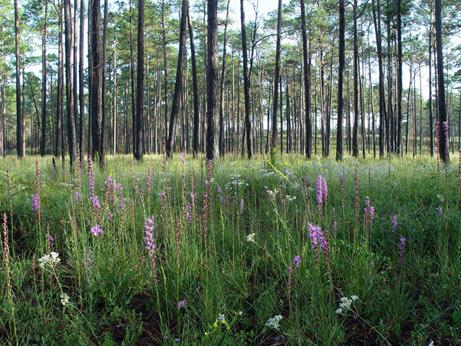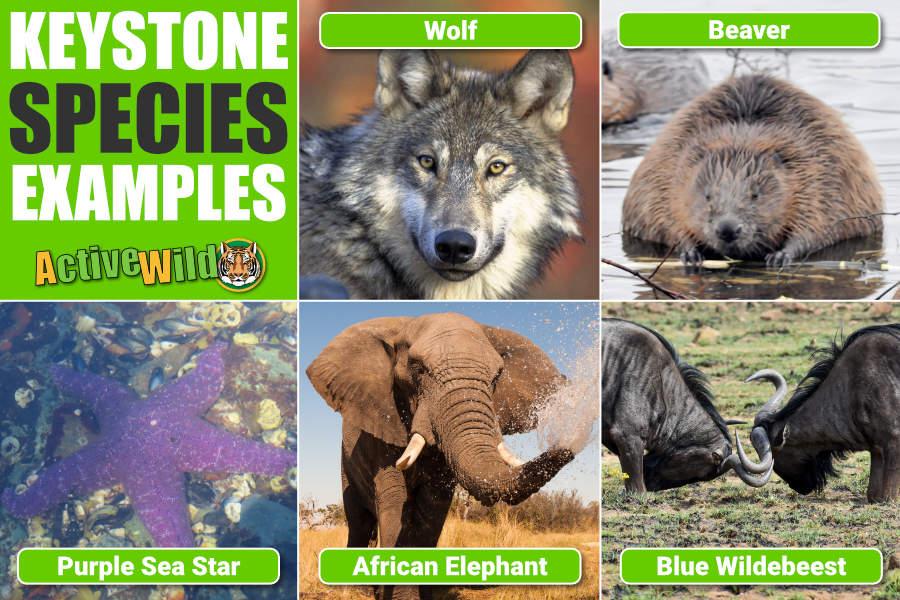Table of Contents
- Exploring the Rich Diversity of Plant Communities in Ecosystems
- Understanding the Role of Keystone Species in Plant Ecology
- Adaptive Strategies: How Plants Thrive in Unique Habitats
- The Interconnectedness of Plant and Animal Relationships
- Conservation Practices to Protect Ecosystem Integrity
- Q&A
- Final Thoughts

Exploring the Rich Diversity of Plant Communities in Ecosystems
Plant communities form the backbone of ecosystems, showcasing a remarkable range of interactions and adaptations. These communities can vary dramatically depending on the environment, climate, and geological features of a region. For instance, in tropical rainforests, you will find multilayered canopies filled with towering trees, vibrant epiphytes, and a rich understory of shrubs and ferns. These diverse layers create unique microhabitats that support a wealth of animal species, contributing to the ecosystem’s overall richness and complexity.
In contrast, arid environments host plant communities that are remarkably resilient. Here, one might encounter specially adapted species such as cacti, succulents, and xerophytes. These plants have evolved strategies to minimize water loss, including thickened cuticles, deep root systems, and specialized leaf structures. The insightful adaptation of these plants not only allows them to thrive in challenging conditions but also serves as an excellent study of survival and resilience in plant ecology.
Throughout different ecosystems, the role of keystone species cannot be overstated. These species profoundly impact their environment by creating, modifying, or maintaining habitats for other organisms. For example, in coastal ecosystems, mangrove trees serve as critical stabilizers of the shoreline while providing nursery habitats for fish and other marine life. Understanding these intricate relationships is vital in conservation efforts, showcasing the need to preserve diverse plant communities across varying ecosystems.
| Plant Community | Key Characteristics | Adaptations |
|---|---|---|
| Tropical Rainforest | High biodiversity, multilayered canopy | Epiphytes, lianas, broad leaves |
| Desert | Low rainfall, drought-resistant species | Thick cuticles, deep roots |
| Coastal Wetlands | Dynamic environments, rich in nutrients | Waterlogged soil adaptations, salt tolerance |

Understanding the Role of Keystone Species in Plant Ecology
In the intricate web of plant ecology, particular species hold a pivotal role due to their substantial impact on community structure and ecosystem health. These species, often referred to as keystone species, shape the environment and influence numerous other organisms in profound ways. They help maintain the balance within ecosystems by regulating populations and providing essential resources. For instance, predators can control herbivore populations, allowing for a diverse array of plant life, while certain plants can alter soil composition and affect water availability, ultimately supporting a broader range of species.
Take, for example, the role of the American beaver, a notable keystone species. By constructing dams, beavers create wetlands that serve as crucial habitats for a variety of plants and animals. This hydrological transformation not only enhances biodiversity but also mitigates the effects of floods and droughts. In turn, these wetlands support a different plant community, which can include species like cattails and water lilies, further influencing the ecosystem’s dynamics. The intricate relationships formed through such interactions highlight the importance of preserving these keystone species to maintain ecological balance.
Another compelling example is the impact of certain herbivores on grassland ecosystems. Grazers like the bison can significantly shape vegetation patterns by consuming dominant grasses, which opens up space for flowering plants and increases plant diversity. This dynamic interplay between herbivores and plant communities is essential for the resilience of the ecosystem. Below is a table summarizing the effects of different keystone species on their respective plant communities:
| Keystone Species | Ecosystem Influence | Plant Community Effect |
|---|---|---|
| American Beaver | Creates wetlands | Increases wetland plant diversity |
| Bison | Controls grassland composition | Enhances flowering plant diversity |
| Sea Otter | Regulates sea urchin populations | Supports kelp forest health |

Adaptive Strategies: How Plants Thrive in Unique Habitats
Plants exhibit an impressive array of strategies that allow them to adapt and thrive in diverse environments. Various species have evolved unique physiological traits that enable them to withstand extreme conditions. For instance, in arid desert habitats, plants such as cacti have developed the ability to store water. They achieve this through modifications like thick, fleshy stems and specialized photosynthesis processes, which minimize water loss. Similarly, some coastal plants, such as mangroves, have adapted to saline conditions, developing salt-excretion mechanisms that prevent toxicity. These traits highlight the remarkable ingenuity of plant life in facing environmental challenges.
Additionally, plants in nutrient-poor ecosystems, such as tropical rainforests, employ specific survival strategies. For example, epiphytic plants like orchids have adapted to grow on other plants, obtaining moisture and nutrients from the air and rain rather than the forest floor. This adaptation allows them to access sunlight more easily while avoiding competition with ground-dwelling species. Furthermore, certain plants in these habitats have developed mutualistic relationships with fungi (mycorrhizae) that enhance nutrient uptake, demonstrating a clever strategy for nutrient acquisition in challenging conditions.
In aquatic environments, plants also display fascinating adaptations. For instance, water lilies possess broad, flat leaves that float on the surface, maximizing their exposure to sunlight while anchoring them securely to the substrate. This floating structure helps them thrive in areas where light is limited. Additionally, plants like duckweed reproduce rapidly and form dense mats, which not only provide shade to lower water layers but also offer habitat for various aquatic organisms. These strategies underline the complexity and resilience of plant life, showcasing how organisms can continuously adapt to their habitats over time.

The Interconnectedness of Plant and Animal Relationships
The relationships between plants and animals are a fascinating web of interactions that reflect the complexity of ecosystems. Pollination is a prime example, where animals such as bees, butterflies, and birds actively participate in the reproduction of flowering plants. These creatures transfer pollen, enabling fertilization and the production of seeds. In return, they receive nectar, a rich source of energy, which illustrates a mutualistic relationship that benefits both parties. Without such interactions, many plants would struggle to reproduce, and the decline in pollinators could severely impact food sources for numerous species, including humans.
Another key interaction can be observed in herbivory, where animals consume plant material. This relationship is often a double-edged sword; while herbivores sustain themselves and their populations through their diet, excessive consumption can damage plant communities and alter ecosystem dynamics. Some plants have developed unique adaptations, such as thorns or toxic compounds, to deter these grazers. Interestingly, some herbivores have evolved mechanisms to detoxify these defenses, showcasing a dynamic balance between predator and prey in nature. This ongoing evolutionary dance highlights the resilience of species and their ability to adapt to one another’s strategies.
Additionally, seed dispersal represents another critical interaction between flora and fauna. Many plants produce fruits that are appealing to animals, which inadvertently play a role in spreading the seeds. When animals consume fruits, they contribute to seed dispersal through their excrement, allowing plants to colonize new areas. This relationship is essential for plant diversity and the establishment of new plant communities. For instance, many trees rely on specific bird species to distribute their seeds, which not only supports plant proliferation but also shapes the habitat for numerous organisms that depend on these trees for shelter and food.

Conservation Practices to Protect Ecosystem Integrity
Ensuring the integrity of ecosystems is a multifaceted challenge that requires a variety of creative conservation practices. One effective strategy involves habitat restoration, which includes rehabilitating degraded landscapes to restore their ecological functions. This may involve the reintroduction of native plant species, reducing invasive species, and implementing controlled burns to enhance the health of fire-adapted ecosystems. These measures not only help revive local biodiversity but also promote resilience against climate change.
Another vital practice is the implementation of sustainable land-use techniques that prioritize ecological balance. This can involve techniques such as agroforestry, where trees are integrated into agricultural landscapes, providing numerous ecological benefits, including improved soil health and increased carbon sequestration. Additionally, the establishment of protected areas and wildlife corridors can safeguard critical habitats from development pressures, ensuring that wildlife has the space to thrive while maintaining the delicate balance of plant interactions within these ecosystems.
Additionally, community engagement plays a crucial role in conservation efforts. By involving local populations in conservation initiatives, such as education programs and citizen science projects, communities become stewards of their environments. This participatory approach not only fosters a deeper connection to nature but also enhances conservation outcomes. As part of this engagement, societies can implement practices such as sustainable fishing, which prevents overexploitation of aquatic ecosystems, and native planting programs, where community members cultivate local flora for landscaping, promoting biodiversity right in urban settings.



0 Comments